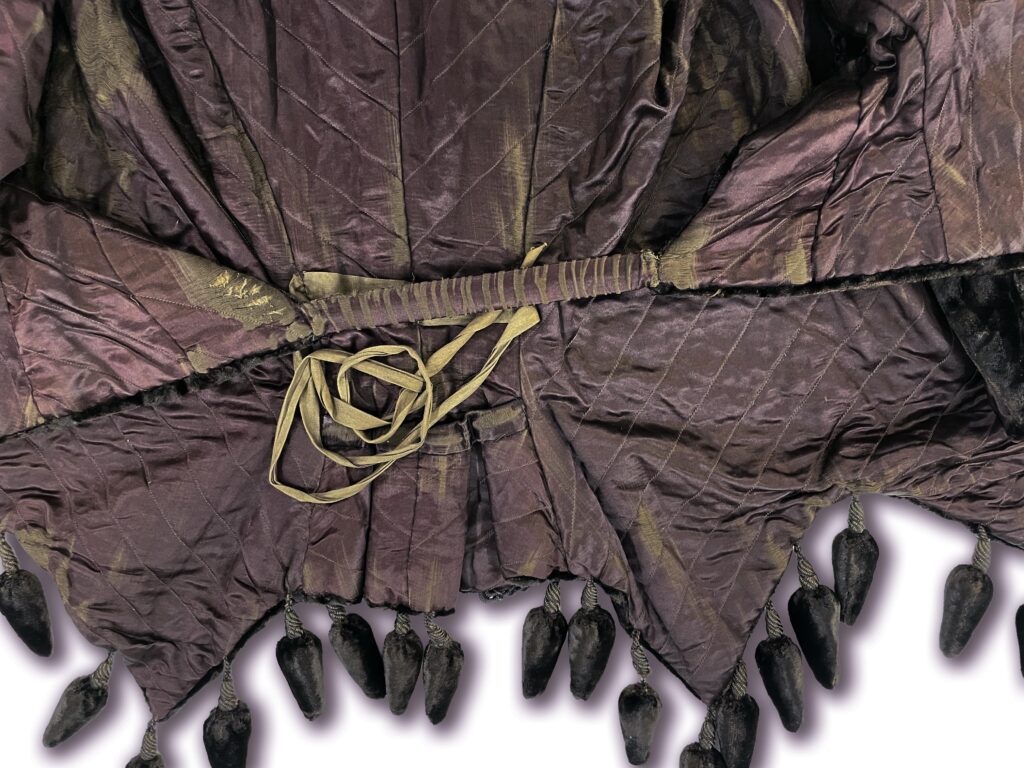Standing in the fashion archives at the National Museum of Scotland, the assistant carefully unfolded the tissue paper wrapped around the roasted chocolate-coloured velvet dolman mantle. The label read: “Barrance & Ford, Ladies Tailors, Hastings”. For me, it might as well have shouted: “Your ancestral relative was here.”
The dolman lay before us like a sleeping memory. The velvet caught the light differently at each angle—sometimes appearing almost black, always revealing an underlying richness that spoke of quality and care. Elaborate passementerie trimming reminded me of a Hussar’s uniform, while inverted velvet peardrops hung in a fringe from the hem. This wasn’t just a museum artefact; it was a conversation across 140 years with the makers.
The curator placed the garment on a mannequin to demonstrate its construction. The famous dolman sleeves—those wide, cape-like extensions suddenly made perfect sense in three dimensions. The construction of the entire piece was designed to address the problems of the bustle era.
Hidden details moved me most. Sewn discreetly into the silk lining was a unique belt-like strap—an innovation I’d never seen mentioned in any fashion history. This thoughtful addition would have helped the wearer manage those dramatic sleeves, preventing bunching during carriage rides between drawing room visits. Such a practical, almost motherly touch was evidence that the craftspeople were real women who understood their clients and navigated real challenges, not just fashion plates. The owner would have been among Britain’s elite, someone who needed to look magnificent while managing the complex social choreography of Victorian visiting culture.

The machine stitching was exquisite, each seam precise and purposeful. Running my eyes along the construction lines, I could almost see Victorian seamstresses at their Singer machines, hear the hiss of gas lamps, feel the rustle of fabric samples. This dolman represented the height of 1880s fashion technology—a sophisticated response to demands for garments that could accommodate enormous bustles while maintaining perfect elegance.
This single mantle embodied everything I’ve discovered about Barrance & Ford’s business philosophy. Here was merit-based craftsmanship at its finest— practical innovation married to aesthetic beauty, serving clients who demanded both function and fashion.
Yet this dolman carried a melancholy edge. By 1890, these sophisticated garments had become obsolete. As an act in fashion’s eternal story, the bustle disappeared, sleeves changed dramatically, and suddenly these textile creations were abandoned.
Sometimes history lives in grand gestures and famous names. At other times, it lives in items like a chocolate-coloured dolman with a hidden strap, created by someone who understood that true craftsmanship means caring about details no one else will see—a reminder that creativity, innovation, and care for others are the threads that truly connect us across time.
My thanks to the museum for preserving this item and the curators for gifting me their valuable time.

